-
Reagents
- Flow Cytometry Reagents
-
Western Blotting and Molecular Reagents
- Immunoassay Reagents
-
Single-Cell Multiomics Reagents
- BD® OMICS-Guard Sample Preservation Buffer
- BD® AbSeq Assay
- BD® Single-Cell Multiplexing Kit
- BD Rhapsody™ ATAC-Seq Assays
- BD Rhapsody™ Whole Transcriptome Analysis (WTA) Amplification Kit
- BD Rhapsody™ TCR/BCR Next Multiomic Assays
- BD Rhapsody™ Targeted mRNA Kits
- BD Rhapsody™ Accessory Kits
- BD® OMICS-One Protein Panels
-
Functional Assays
-
Microscopy and Imaging Reagents
-
Cell Preparation and Separation Reagents
Old Browser
Looks like you're visiting us from {countryName}.
Would you like to stay on the current location site or be switched to your location?
BD® Research Cloud (BD RC), built by the creators of FlowJo™ Software, helps you organize your projects, gain visibility and control of your experiments, or quickly and easily collaborate with your colleagues.
It alleviates time spent moving data between one system and another and helps you design your next flow cytometry panel on conventional or BD spectral cytometers.
Sign up today for a free account at bdresearchcloud.com
Download our BD® Research Cloud (BD RC) brochure
For Professionals in Research
Experience the future of spectral panel design with the BD® Spectral Hotspot Matrix. This innovative tool, part of the BD® Research Cloud, revolutionizes how you approach spectral panel design by predicting the unmixing-dependent spread for each fluorochrome, ensuring optimal performance without the guesswork.
Features
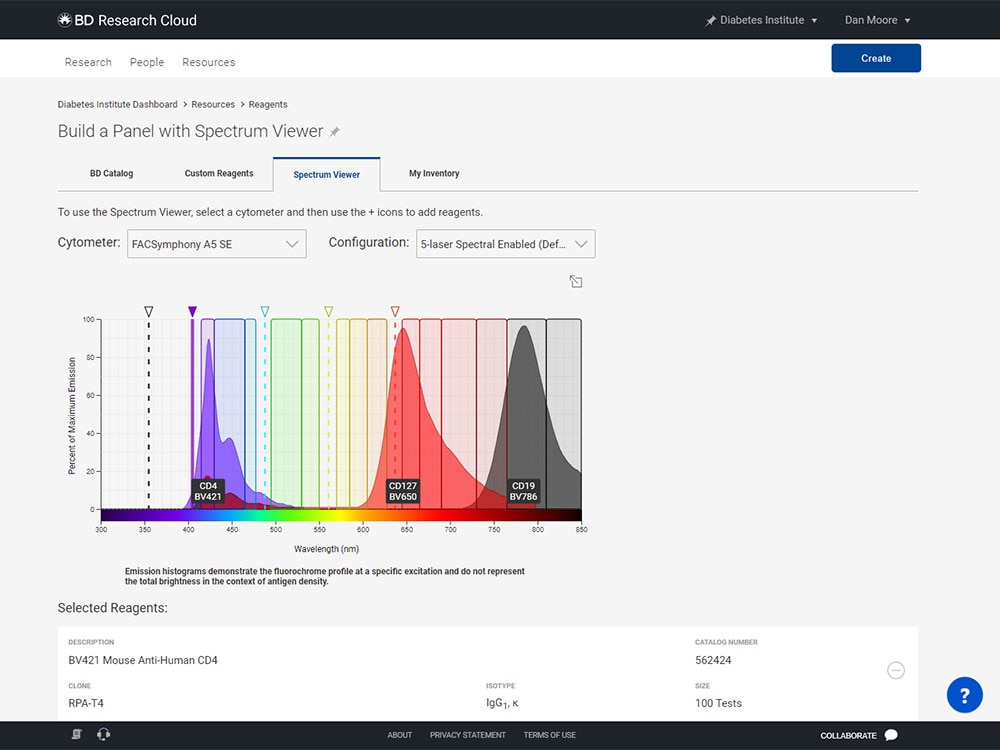
Utilize the Reagent Selector tool inside
BD® Research Cloud to guide you through the flow cytometry panel design process

BD has been the leader in panel design education since the BD Horizon tours in 2014, and the Reagent Selector tool inside BD® Research Cloud guides users through a panel design process consistent with those principles.
- Define, store and share your cytometer configurations for use in panel design.
- Use the BD reagent catalog and define custom fluorochromes.
- Define your own reagent inventory with a premium license.
- Define your biology using pre-defined populations and add your antigen density.
- Assign your fluorochromes consistent with BD Horizon principles.
- Easily select and order reagents, share your panel with a colleague or request a quote.
- Visualize your panel with multiple spectrum viewer graphs, including a unique spectral heatmap and similarity and complexity values for BD spectral cytometers.
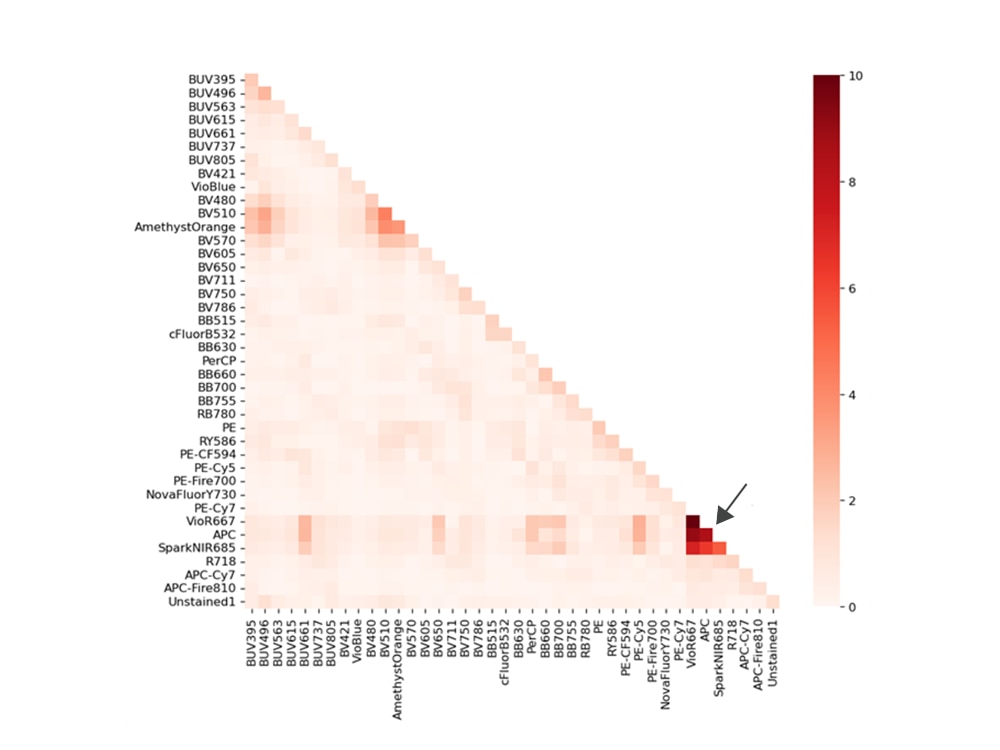
Discover how the BD® Spectral Hotspot Matrix can help you optimize your spectral panel performance and avoid problematic fluorochrome combinations.

The BD® Spectral Hotspot Matrix is a simple tool that predicts the unmixing-dependent spread for each fluorochrome in the context of a specific panel. It helps identify problem areas in a panel, indicating both the fluorochromes that will experience the most unmixing spread and the problematic combinations of fluorochromes that cause that spread.
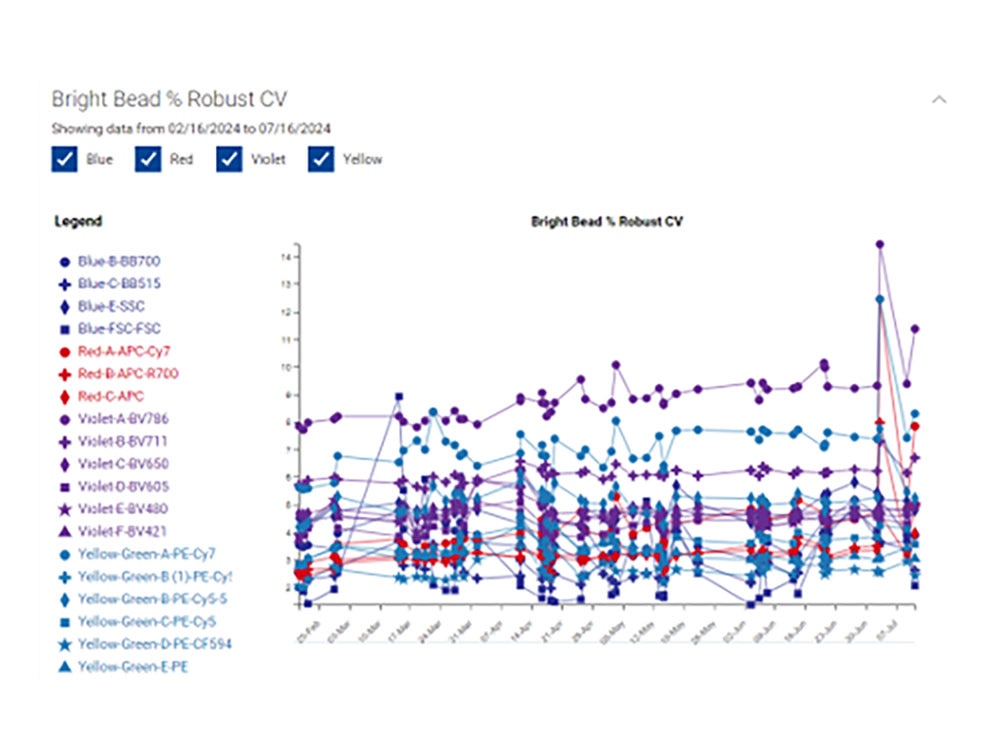
Instrument Health Monitoring in conjunction with BD® Remote Support Services(1)

- Convenient dashboard to track instrumentation status and view QC reports
- View workstation storage space
- Available for any connected cytometer with BD RC Professional license
(1) Formerly BD Assurity Linc™ Software
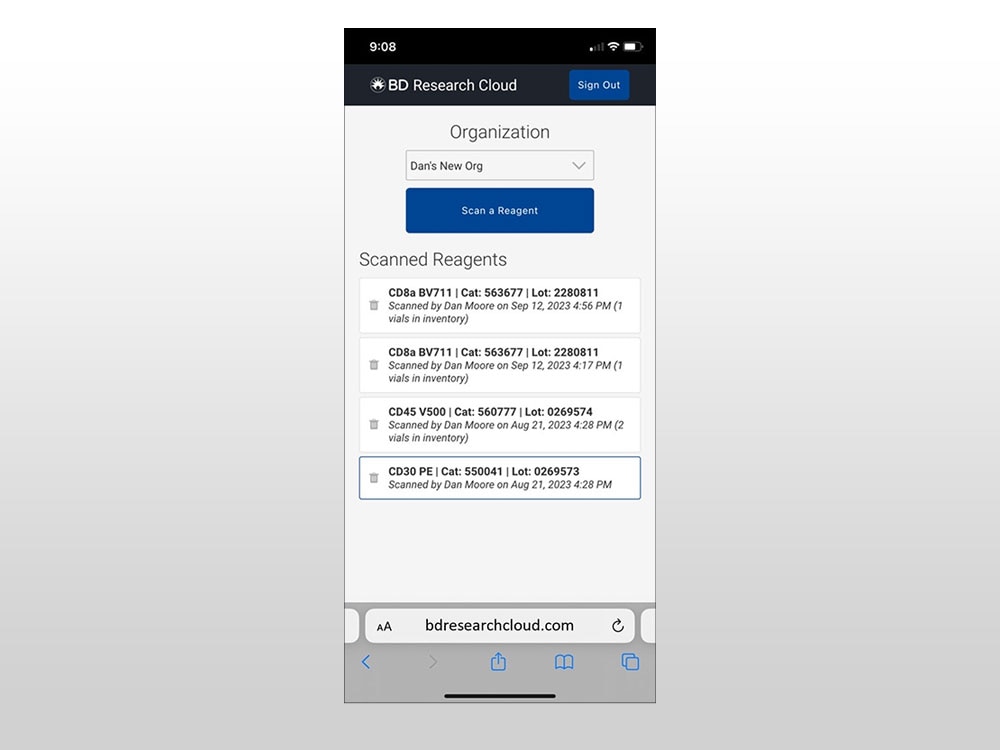
Manage your reagent inventory, titers and master mixes

- Scan reagent arrivals to the lab using any device with a camera
- Track the inventory information
- Add titration information, and you can link to the FCS data
- Create staining protocols for panels
- Automatically pull in titration and lot information
- Easily calculates master mixes and buffer volumes
- Scan reagents to find location or titer information
- Scan reagents to update inventory information
- Easily add scanned reagents to wishlists
- Use wish lists to easily reorder following your lab process
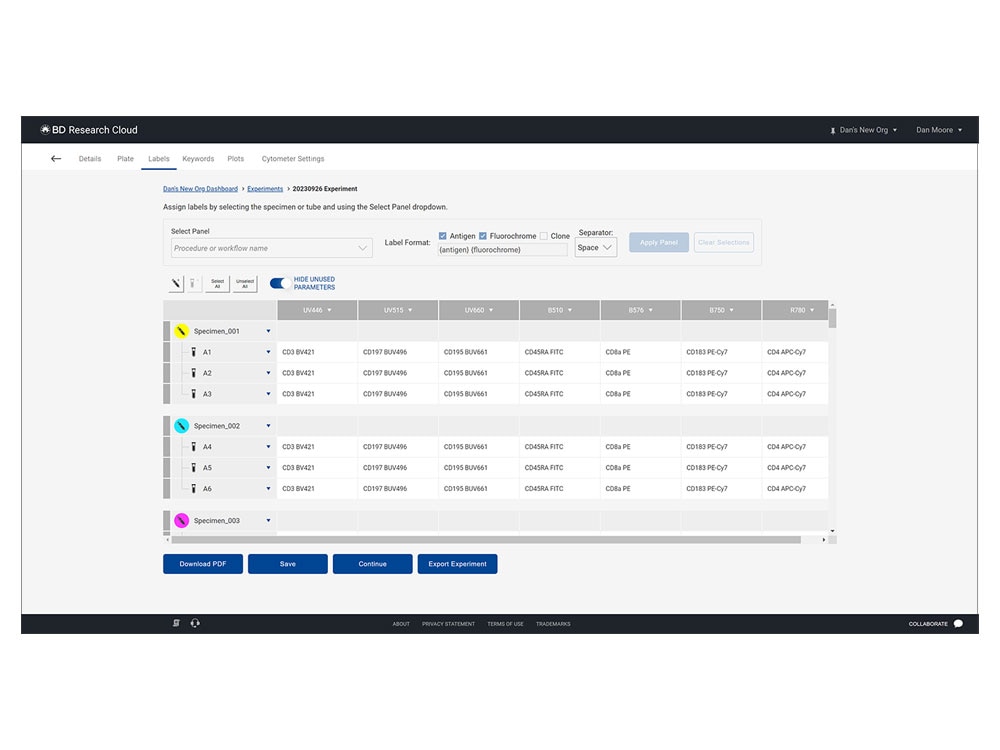
Optimize the time spent on your flow cytometers and annotate your experiments for analysis ahead of time.

With BD RC, you can:
- Define your experiment away from the cytometer and then import into BD FACSDiva™ Software.
- Easily lay out your specimens or your plate, pull in your panel design information, define keywords to capture in the FCS files, and define the plots and gates for your experiment without spending extra time at the cytometer while your cells are waiting to be run.
- Store and share the workspace files and the underlying data with your colleagues as BD® Research Cloud also integrates with FlowJo™ Software directly. Changes can easily be saved back to BD RC to allow others access and save the analysis version history.
"The BD® Research Cloud (BD RC) is an ideal platform for organizing and storing data generated by the BD FACSDiscover™ S8 Cell Sorter, which are too large to be kept on local desktops. It can automatically process the image files and link them to their corresponding FCS data which can then be loaded into a FlowJo workspace via the BD RC, allowing the associated images to be analyzed with BD CellView™ Lens on either a Mac or PC workstation. This provides an efficient way to centralize the analysis of large, multimodal flow cytometry datasets."

"The BD® Research Cloud (BD RC) is an ideal platform for organizing and storing data generated by the BD FACSDiscover™ S8 Cell Sorter, which are too large to be kept on local desktops. It can automatically process the image files and link them to their corresponding FCS data which can then be loaded into a FlowJo workspace via the BD RC, allowing the associated images to be analyzed with BD CellView™ Lens on either a Mac or PC workstation. This provides an efficient way to centralize the analysis of large, multimodal flow cytometry datasets."
“I have been using BD® Research Cloud to develop panels for flow experiments particularly with the BD FACSDiscover™ S8 Cell SorterS8. The platform facilitates collaboration with BD personnel and lab members. It's intuitive, especially for panel workflow setup, making it easy to add markers and fluorophores. BD RC provides information on conflicting fluorophores to avoid selecting them and offers options for reagents, catalog numbers, and other details to streamline next steps.”

“I have been using BD® Research Cloud to develop panels for flow experiments particularly with the BD FACSDiscover™ S8 Cell SorterS8. The platform facilitates collaboration with BD personnel and lab members. It's intuitive, especially for panel workflow setup, making it easy to add markers and fluorophores. BD RC provides information on conflicting fluorophores to avoid selecting them and offers options for reagents, catalog numbers, and other details to streamline next steps.”


“I have been using BD® Research Cloud to develop panels for flow experiments particularly with the BD FACSDiscover™ S8 Cell SorterS8. The platform facilitates collaboration with BD personnel and lab members. It's intuitive, especially for panel workflow setup, making it easy to add markers and fluorophores. BD RC provides information on conflicting fluorophores to avoid selecting them and offers options for reagents, catalog numbers, and other details to streamline next steps.”
Fauzia Nurul Izzati, M.Sc. PhD Student, Edgar Lab
University of Toronto

BD® Research Cloud Frequently Asked Questions
For Research Use Only. Not for use in diagnostic or therapeutic procedures. Refer to Manufacturer's instructions for use and related user manuals and technical sheets before using this product as described. Comparisons, where applicable, are made against older BD technology, manual methods or are general performance claims. Comparison are not made against non-BD technologies, unless otherwise noted.
